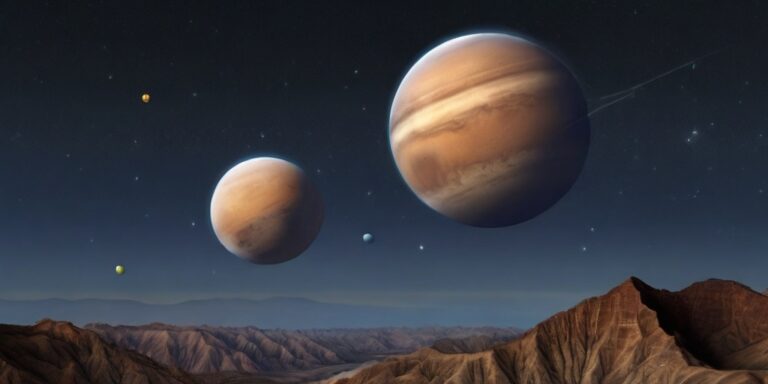Worldsfeed News Desk: In the early hours of February 22, sky gazers are in for a treat as Venus and Mars perform a celestial dance, coming exceptionally close in an event known as an appulse. The two planets will seemingly merge, appearing just half a degree apart in the constellation of Capricornus, enhancing the cosmic spectacle for observers on Earth.
Unfortunately, for most of the United States, this event will unfold during the daytime, making it challenging to witness. In New York, the planets will only be visible around 3 degrees above the horizon at dawn, while in Los Angeles, they will appear around 5 degrees above the horizon, according to in-the-sky.org.
The term “appulse” refers to the closest apparent distance between two celestial bodies as observed from a third object, in this case, Earth. This is distinct from a conjunction, where two objects closely align at the same right ascension. Interestingly, Venus and Mars will also experience a conjunction on the same day, albeit a few hours later.
Despite the illusion of proximity, Venus and Mars are significantly distant from each other in reality. Venus is currently around 129 million miles away from Earth, while Mars is even farther at 213 million miles. The visual closeness is due to their positions on the opposite side of the sun from our perspective. Notably, Mercury is also making its presence felt in the celestial neighborhood, having recently conjuncted with Mars on January 27.
For those fortunate enough to witness this cosmic rendezvous, Venus will outshine Mars, boasting a magnitude of -3.9 compared to Mars’s 1.3. In astronomical terms, a lower magnitude indicates greater brightness. Venus is exceptionally bright, with only about six stars outshining it in the night sky. To put it in context, an object with a magnitude of 2 is roughly 40 percent as bright as one with a magnitude of 1. Venus, with an apparent magnitude of -4, is incredibly luminous.
If you miss this particular event, fear not, as such close approaches occur approximately once a year. Looking ahead, Venus and Saturn are set to dazzle observers with their close encounter on March 21, though visibility from the U.S. may be limited due to their position below the horizon. The celestial theater continues to unfold, offering captivating displays for those who keep their eyes on the night sky.


0 Comments